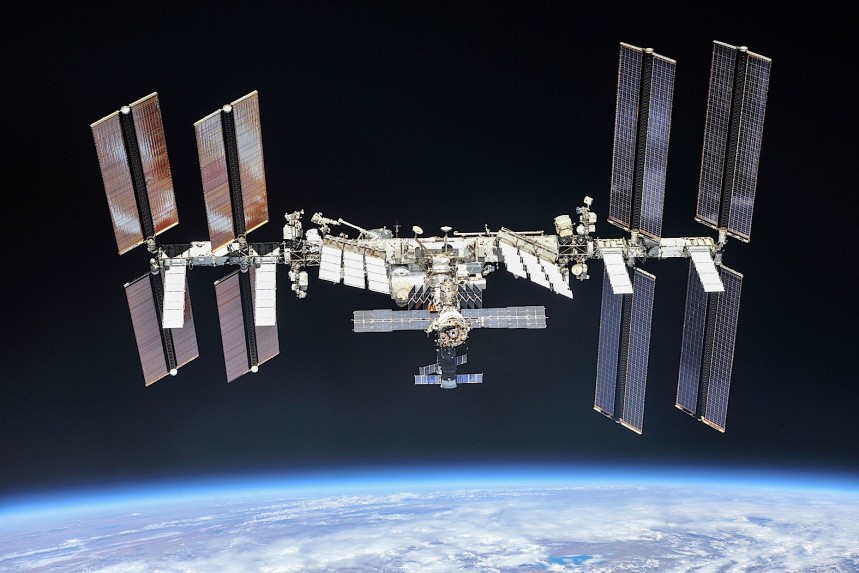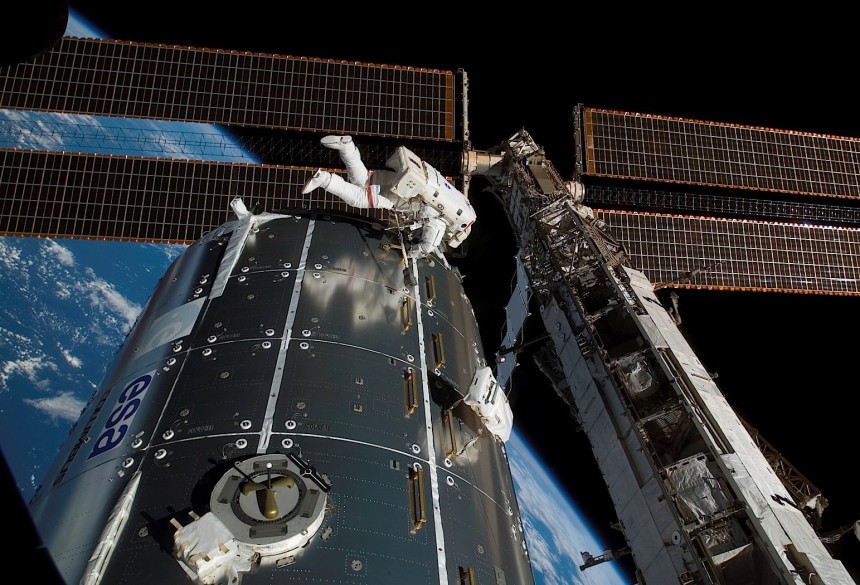The International Space Station is a habitable satellite currently soaring around the Earth at 27,600 kph (17,100 mph), at an altitude of just over 400 km (250 miles) and it completes 15.5 full orbits of the planet each day. It’s been doing so since 1998, having clocked up nearly 117,000 orbits, but it won’t keep going forever and, at some point in the future, it will need to be brought back down to Earth.
Usually, all satellites that have outlived their usefulness are either steered to re-enter the thicker atmosphere where they usually burn up due to friction before they touch down (if they’re low orbit satellites). If they are higher orbit satellites, they will instead be rerouted to go further away from the Earth. The idea behind this is to not have a floating junkyard spinning around our planet since this can pose serious safety threats for all satellites that are still operational (and especially if they happen to be manned).
For those larger satellites whose fate is to be brought back down to Earth (and that won’t burn up upon reentry), there’s actually a special place they’re steered towards in the Pacific ocean that’s officially called Point Nemo (and colloquially known as the Spacecraft Cemetery). This place, which is home to the remains of some 200 satellites (including what was left of the Mir space station) is so far away from human settlements, that the closest humans to it are actually the astronauts aboard the ISS when it passes overhead.
But is it feasible to do the same for the entire ISS? Well, there’s a lot to talk about here, especially since the station is made up of many modules that were not only hugely expensive to build, but also just getting them into lower Earth orbit further bumped up the already ridiculous cost.
The ISS was initially designed to stay in operation until 2016. Then, this was extended to 2020 and after that extended yet again to 2024. NASA has funding to keep it afloat until 2025, but after that year it’s not really clear what will happen to it.
The American space administration hopes some third party company will step in and take over the reins, but with an estimated annual running cost of nearly $4-billion, finding this new commercial player might prove tricky. And because of component degradation, the annual cost is constantly on the rise too - even the all-important electricity-producing solar panels are losing efficiency faster than initially predicted.
The station is also losing altitude, at a rate of 2 km (1.2 miles) per month, and it’s constantly expending fuel to keep itself on the correct trajectory. Left without propulsion, it would eventually return to earth and, just like any other man-made object that reenters the atmosphere, it would start to burn up due friction. However, since it’s so massive (about the same size as a football field (or slightly larger than a Boeing 747), there’s a good chance not all of it will burn up.
NASA estimates that as much as 16 percent of the ISS will survive reentry, which translates to as much as 78 tons (175,000 pounds), so it will still cause some damage if, say, it misses its designated mid-ocean landing spot. For it to be steered towards the right spot, though, it will need additional fuel to be transported on-board. The total estimated cost to bring the ISS down safely is close to $1 billion.
There is a high likelihood that not all of the station will plummet back down to Earth. Russia intends to detach its segments and re-use them as part of a new space station of its own. There are also Japanese modules that make up the ISS, as well as modules sent by the European Space Agency.
You shouldn’t feel sad that it’s eventually going to be decommissioned, even though it’s quite iconic and without precedent by the sheer number of astronauts that have stayed on board, as well as the experiments they carried out. It is being taken down because at one point it will no longer be safe for people to be on board, and it will be even harder at that point to justify the (rising) maintenance costs.
Besides, it will be followed by an even more impressive and interesting space station that won’t orbit the Earth. The plan is to have a new space station orbit the Moon instead - its official name is the Lunar Orbital Platform-Gateway (or just Lunar Gateway / LOP-G) and the plan is to begin sending modules around the moon as of 2022 and have it fully operational by 2028 (when a manned Moon landing is also planned).
LOP-G won’t be the only new space station, though. Russia plans to have one of its own, as does China, and Elon Musk’s SpaceX may also be ready for its very own space station within the next decade too.
For those larger satellites whose fate is to be brought back down to Earth (and that won’t burn up upon reentry), there’s actually a special place they’re steered towards in the Pacific ocean that’s officially called Point Nemo (and colloquially known as the Spacecraft Cemetery). This place, which is home to the remains of some 200 satellites (including what was left of the Mir space station) is so far away from human settlements, that the closest humans to it are actually the astronauts aboard the ISS when it passes overhead.
But is it feasible to do the same for the entire ISS? Well, there’s a lot to talk about here, especially since the station is made up of many modules that were not only hugely expensive to build, but also just getting them into lower Earth orbit further bumped up the already ridiculous cost.
The American space administration hopes some third party company will step in and take over the reins, but with an estimated annual running cost of nearly $4-billion, finding this new commercial player might prove tricky. And because of component degradation, the annual cost is constantly on the rise too - even the all-important electricity-producing solar panels are losing efficiency faster than initially predicted.
The station is also losing altitude, at a rate of 2 km (1.2 miles) per month, and it’s constantly expending fuel to keep itself on the correct trajectory. Left without propulsion, it would eventually return to earth and, just like any other man-made object that reenters the atmosphere, it would start to burn up due friction. However, since it’s so massive (about the same size as a football field (or slightly larger than a Boeing 747), there’s a good chance not all of it will burn up.
NASA estimates that as much as 16 percent of the ISS will survive reentry, which translates to as much as 78 tons (175,000 pounds), so it will still cause some damage if, say, it misses its designated mid-ocean landing spot. For it to be steered towards the right spot, though, it will need additional fuel to be transported on-board. The total estimated cost to bring the ISS down safely is close to $1 billion.
You shouldn’t feel sad that it’s eventually going to be decommissioned, even though it’s quite iconic and without precedent by the sheer number of astronauts that have stayed on board, as well as the experiments they carried out. It is being taken down because at one point it will no longer be safe for people to be on board, and it will be even harder at that point to justify the (rising) maintenance costs.
Besides, it will be followed by an even more impressive and interesting space station that won’t orbit the Earth. The plan is to have a new space station orbit the Moon instead - its official name is the Lunar Orbital Platform-Gateway (or just Lunar Gateway / LOP-G) and the plan is to begin sending modules around the moon as of 2022 and have it fully operational by 2028 (when a manned Moon landing is also planned).
LOP-G won’t be the only new space station, though. Russia plans to have one of its own, as does China, and Elon Musk’s SpaceX may also be ready for its very own space station within the next decade too.







